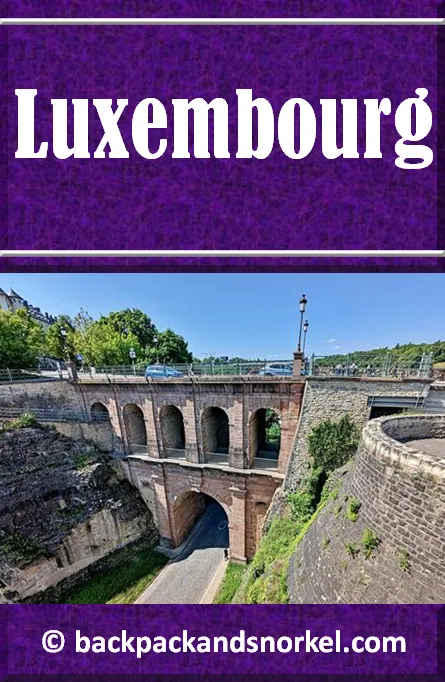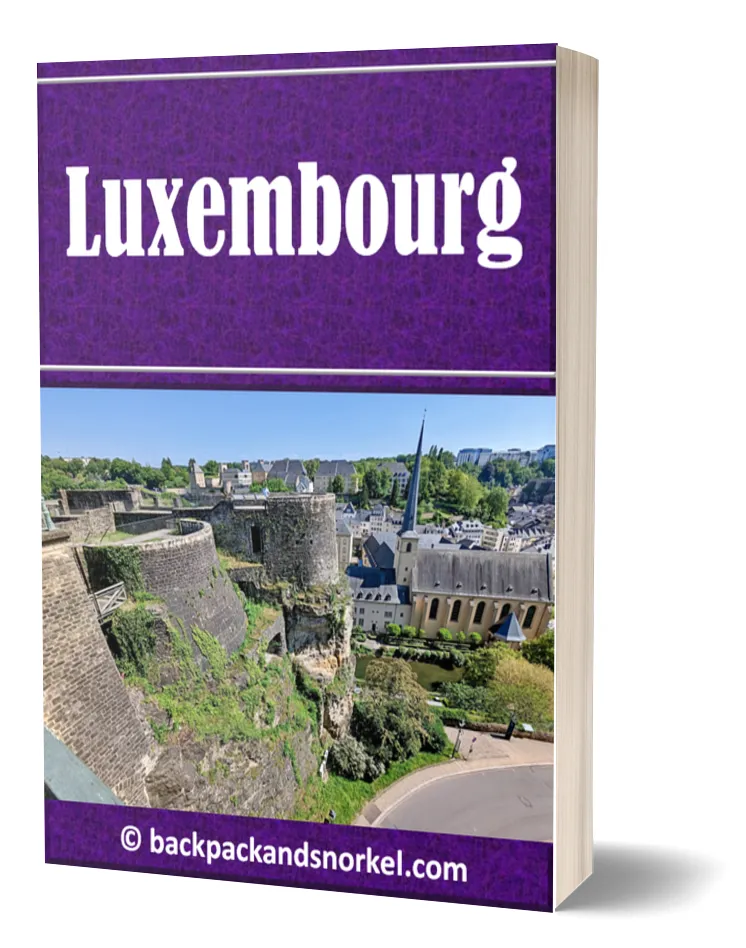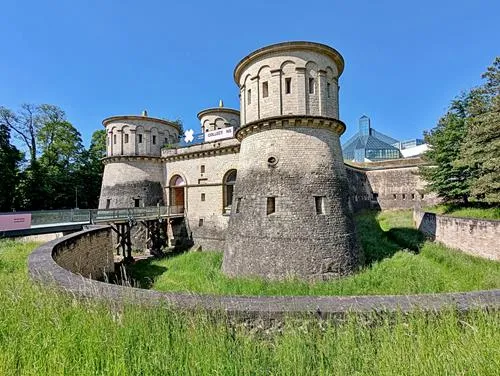Travel Guide for Luxembourg - Luxembourg Purple Travel Guide
Luxembourg is a little-known gem in central Europe. It is known for its fusion of French, German and Dutch cultures, rich history and historical buildings and castles, beautiful scenery, unspoiled nature, good hiking, and warm, welcoming, and open-minded people. This is augmented by good and often free museums and free transportation.
Luxembourg is a small country and can be explored in three full days.
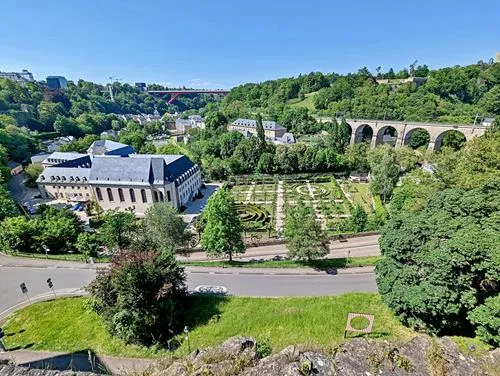

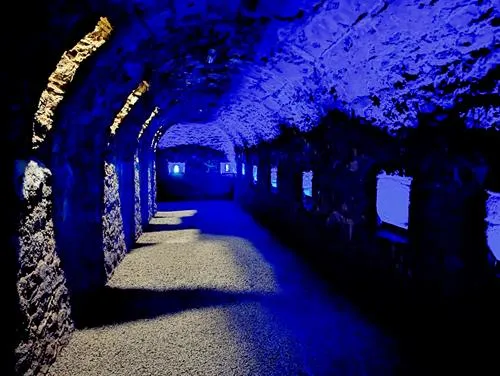



Table of contents
How much time do you need to visit Luxembourg?
Luxembourg is a small country, but it has a lot of attractions. Most visitors visit Luxembourg for 2 or 3 days, people that like to hike the many trails or immerse themselves in the local culture typically stay up to a week.
Our Backpack and Snorkel Luxembourg Travel Guide provides you with a 3-day tour that allows you to see the main highlights of Luxembourg.
In this travel guide, we try to balance historical buildings and castles, museums and outdoor experiences and we try to avoid duplication as much as possible so that you get rich and comprehensive Luxembourgian experience in three days.
The local cuisine is definitely tending towards French eating culture, but you can find lots of German-influenced dishes too. Since Luxembourg is a melting pot of global cultures, you will find a surprising variety of foods from all over the world, and they are there for you to try.
What is the best time to visit Luxembourg?
Landlocked Luxembourg has an oceanic climate with warm summers, cold to cool winters and moderate precipitation throughout the year. It is cloudy about two-thirds of the year.
Spring (late March - June): Mild temperatures, less precipitation than in winter and blooming spring flowers make this a good time to explore Luxembourg. The tourist season in Luxembourg begins in June.
Summer (late June - September): This is the peak tourist season in Luxembourg with the highest prices, warm temperatures, and plenty of outdoor activities to enjoy. September is the time when you will find wine festivals in many towns around the country.
Fall (late September - December): Fall brings mild weather, fewer tourists, and, typically in October, stunning fall foliage. Late October often brings cloudy skies and rain, and November brings falling temperatures.
Winter (late December - March): December and January are the coldest months in Luxembourg.
Christmas time can be busy – people visit Christmas markets, and the Winter Lights Festival. The cities are decorated for Christmas and the locals embrace the holiday spirits.
January through March is the least busy time for visitors in Luxembourg and hotel rates are at their lowest. The weather is cold and rainy or snowy, the days are short, and the sky is cloudy. This is a good time for indoor activities like visiting museums, shows and concerts.
Below is the climate that you can expect on your trip to Luxembourg:


The highlights of the history of Luxembourg
35,000BC: first traces of settlements.
2nd century BC: Celtic tribes settle in the region.
58 to 51BC: The Romans invade the Celtic territory under Julius Caesar. The area will be part of the Roman Empire for the next 450 years.
406AD: Rome abandons this area after it is infiltrated by the Franks (Germanic people). The area becomes part of the Kingdom of the Franks and the predecessor of what is now Luxembourgish language is introduced.
694: Willibrord and other monks establish the Abbey of Echternach in 698, which is instrumental in the Christianization of the locals.
843–855: What is now Luxembourg is integrated into the Kingdom of Middle Francia.
855–959: What is now Luxembourg is part of the Kingdom of Lotharingia.
959–1059: What is now Luxembourg is now part of the Duchy of Lorraine.
963: The recorded history of Luxembourg officially starts in the year 963, when Count Siegfried acquires a rocky promontory (Bock Rock), with a small Roman fortification on it and its immediate surrounding area from the Imperial Abbey of St. Maximin in Trier. This area is known as Lucilinburhuc (little castle).
963: Siegfried builds a stronghold, called castellum Lucilinburhuc (now Luxembourg Castle), on top of the Bock promontory, likely by refurbishing the old Roman structure. Due to its proximity to an ancient trade route, the Reims-Trier Roman Road, a marketplace starts to develop, and people start to settle here.
1083: Conrad I is the first to call himself "Count of Luxembourg". By doing this, he creates the independent County of Luxembourg as a state within the Holy Roman Empire.
13th century: Through marriage and warfare, Luxembourg has significantly enlarged its size.
1308: The Count of Luxembourg, Henry VII, becomes King of the Romans (official title used by the king of Germany).
1312: Henry VII becomes Holy Roman Emperor. He will be the first of four Holy Roman Emperors that the House of Luxembourg produces until 1443.
1313: John the Blind (John of Luxembourg), the son of Henry VII, becomes the Count of Luxembourg in addition to his title of King of Bohemia (from 1310) and titular King of Poland. John the Blind will become a national hero in Luxembourg, and a major figure in Luxembourgish history and folklore. He is considered by many historians the epitome of chivalry in medieval times.
1346: John the Blind finds a heroic death at the Battle of Crécy.
1354: Charles IV elevates the county to the Duchy of Luxembourg and makes his half-brother Wenceslaus I the first Duke of Luxembourg.
1312–1443: The House of Luxembourg was competing with the House of Habsburg (Austria) for supremacy within the Holy Roman Empire and Central Europe.
1443: The House of Luxembourg becomes extinct, because Sigismund and Elizabeth of Görlitz (Duchess of Luxembourg from 1411-1443) are both heirless when they die. All possessions of the Luxembourg Dynasty are redistributed among the European aristocracy.
1444: Luxembourg becomes part of the Burgundian Netherlands, which brings it under foreign rule.
1482: Philip the Handsome from the House of Habsburg inherits all of what will later become the Habsburg Netherlands, including the Duchy of Luxembourg.
1506–1556: Luxembourg is part of the House of Habsburg under Austrian rule.
1542: The King of France, Francois I, invades Luxembourg twice, but the Habsburgs under Charles V reconquer the Duchy each time.
1556–1714: Luxembourg is part of the Spanish Netherlands (ruled by the Spanish branch of the House of Habsburg).
1635: France and Spain go to war which will last until 1659.
1659: In the Treaty of the Pyrenees, Spain cedes the Luxembourgish fortresses of Stenay, Thionville, and Montmédy, and the surrounding territory to France and effectively reduces the size of Luxembourg for the first time.
1684-1697: France conquers Luxembourg, but returned to the Spanish in 1697 for support in the War of the Spanish Succession (control of the Spanish empire).
1714–1794: Luxembourg occupied by the pro-Austrian allied forces during the War of the Spanish Succession and is now part of the House of Habsburg under Austrian rule.
1794–1815: France invades the Austrian Netherlands again during the War of the First Coalition. The French Revolutionary Army commits many atrocities against the Luxembourgish civilian population and abbeys, including the massacres of Differdange and Dudelange, and the destruction of the abbeys of Clairefontaine, Echternach and Orval. The Fortress of Luxembourg resists for nearly 7 months before the Habsburg forces surrender.
French politician Lazare Carnot calls Luxembourg ‘the best fortress in the world, except Gibraltar’, which later gives Luxembourg City the nickname ‘Gibraltar of the North’. France implements French as the only official language.1815–1890: After Napoleon Bonaparte is defeated, the Duchy of Luxembourg is restored. Because Luxembourg used to be part of the Holy Roman Empire and the Habsburgian Netherlands, the Kingdom of Prussia and the United Kingdom of the Netherlands now claim possession of the territory. At the Congress of Vienna, it is decided that Luxembourg becomes a member state of the newly formed German Confederation, and that William I of the Netherlands (King of the Netherlands) becomes the head of state, and that the Fortress of Luxembourg is to be manned by Prussian troops and that large parts of Luxembourgish territory (including Bitburg and St. Vith) become Prussian possessions. This Second Partition of Luxembourg is the second time the Duchy of Luxembourg is reduced in size. To compensate the Duchy for this loss, the Duchy of Luxembourg is elevated to a Grand-Duchy, making the Dutch monarch the Grand-Duke of Luxembourg.
1839: The Treaty of London initiates the Third Partition of Luxembourg after the Dutch King and Prussia reject the claim of the newly formed country of Belgium on the Grand-Duchy of Luxembourg. Luxembourg loses more than half of its territory. The predominantly francophone western part of the country is transferred to Belgium while the remaining Germanic-speaking Grand-Duchy of Luxembourg receives full independence.
1867: Signed in the aftermath of the Austro-Prussian War and the Luxembourg Crisis, the Second Treaty of London grants Luxembourg full independence and neutrality. To ensure Luxembourg's neutrality, the treaty dictates that Luxembourg City’s westward fortifications have to be demolished and never be rebuilt. This task will take 16 years and cost 1.5 million gold francs. Over 15 miles (24 km) of underground defenses and 9.9 acres (4 hectares) of casemates, batteries, barracks, etc.
1870: During the Franco-Prussian war, Luxembourg's neutrality is respected, and neither France nor Germany invade the country.
1890: The Dutch king William III has no male heirs to succeed him and thus the Dutch claim to the title Grand-Duke of Luxembourg ceases, because Luxembourg follows Salic law which bars Wilhelmina, the daughter of William III, from succession in Luxembourg. While the crown of the Netherlands passes to Wilhelmina, the crown of Luxembourg passes to Adolph of Nassau-Weilburg (Adolphe) in accordance with the Nassau Family Pact. This ends almost 40 years of foreign rule over Luxembourg.
1914: Imperial Germany invades Luxembourg during World War I on their way to conquer France. Germany officially allows Luxembourg to maintain much of its independence and political system, while secretly planning to annex the country after they conquer France. The Luxembourg government believes that Germany will not annex Luxembourg and stays strictly neutral. This neutrality will almost get Luxembourg dissolved after World War I as France and Belgium interpret it as collaboration with Germany.
Unlike their government, many Luxembourgers fear that Germany will eventually annex their country. Approx. 3,700 Luxembourgers serve in the French army against Germany and about 2,000 die. Their sacrifices have been commemorated at the Gëlle Fra monument.1919: 77.8% of the Luxembourgish population vote to maintain the monarchy and reject the establishment of a republic.
1940: During World War II, Germany invades and annexes Luxembourg. Luxembourg's government flees to London and supports the Allies.
1945: 2.45% of Luxembourg’s pre-war population is killed, and about one third of all buildings are destroyed or heavily damaged. Luxembourg becomes a founding member of the United Nations.
1949: Luxembourg becomes a founding member of NATO.
1950's: Luxembourg is one of the founding members of the predecessor organizations which are now the European Union.
1999: Luxembourg joins the Eurozone.
2013-2014: Luxembourg is elected to be a non-permanent member of the United Nations Security Council.
Driving a car in Luxembourg
You can book rental cars in Luxembourg here.
Cars are driven on the right side of the road like in Luxembourg’s neighboring countries of Belgium, France, and Germany. The speed limits are:
130 km/h (81 mph) on highways (reduced to 110 km/h (69 mph) when the road is wet or has snow on it)
90 km/h (56 mph) on roads outside the cities
50 km/h (31 mph) in urban areas
Police enforce the speed limit with mobile or fixed speed cameras. At the time of writing, speeding fines range between 45 Euros and 145 Euros depending on the severity for the first offense. Serious repeat offenders can go to jail or be fined up to 10,000 Euros.
Parking in the downtown areas is almost never free and charges range from 0.50 to 2 Euros per hour at the time of writing.
Public Transportation in Luxembourg
Since 2020, all forms of public transportation, including buses, trains and trams, are free throughout the entire country. The buses are fast, clean, safe and in very good working order.
If the bus or train crosses the border into neighboring Belgium, France, or Germany, then you will have to pay for the ride.
You can find your connections on the internet - the links are available in our Luxembourg Purple Travel Guide in the Backpack and Snorkel Travel Store
Money and Credit Cards in the Luxembourg
The currency used in Luxembourg is the Euro. You can find the current exchange rate here.
Credit cards (MasterCard and VISA) are widely accepted.
Can I drink tap water in Luxembourg?
Tap water is of high quality and safe to drink in Luxembourg. Because it is treated with ozone or chlorine dioxide, it does not have a chlorine taste or odor. It is absolutely tasteless and thus it is not necessary to filter it.
Telephone
The country code for Luxembourg is: +352
In which Time Zone is Luxembourg
Luxembourg like its neighboring countries, uses Central European Time/UTC+1 and observes Daylight saving time (DST). You can find the current local time here.
Visa requirements for Luxembourg
Luxembourg is part of the Schengen Area, like its neighboring European Union countries. There is no border control if you enter or exit Luxembourg by car. You can check if you need a visa to enter Luxembourg here.
Languages spoken in Luxembourg
Luxembourg has three official languages: Luxembourgish, German and French.
French: French is the most widely spoken language in Luxembourg and it is the main communication language. If you visit stores or restaurants that are mostly frequented by locals, you may encounter workers that only speak French and maybe a few words German or English. In museums, almost all exhibits will have French descriptions, many will also have German descriptions but only few descriptions will be in English.
German: German is still the most popular language in newspapers, but French is gaining popularity.
Luxembourgish: Luxembourgish has similarities to German and Dutch. It is the dominant spoken language in politics.
English: Most people in the tourism industry speak English.
Three-day itinerary for your Luxembourg visit
The best way to experience Luxembourg is on a 3-day or longer trip.
Our itinerary allows you to discover Luxembourg City for two days and brings you to Vianden Castle and the city of Echternach on the third day.
You can use this itinerary as it is or modify it to fit your interests and travel style.

Where do you want to go now?
Other popular Purple Travel Guides you may be interested in:
Like this Backpack and Snorkel Purple Travel Guide? Pin these for later:

